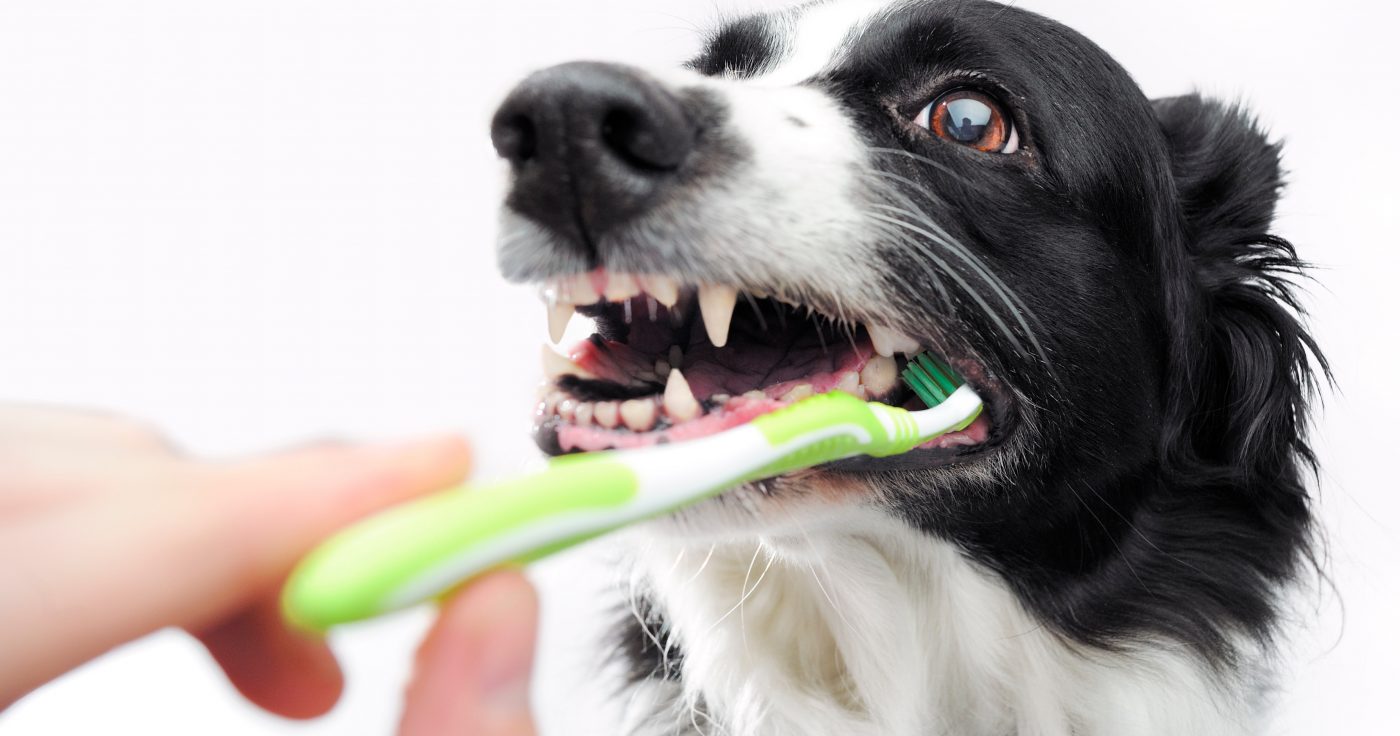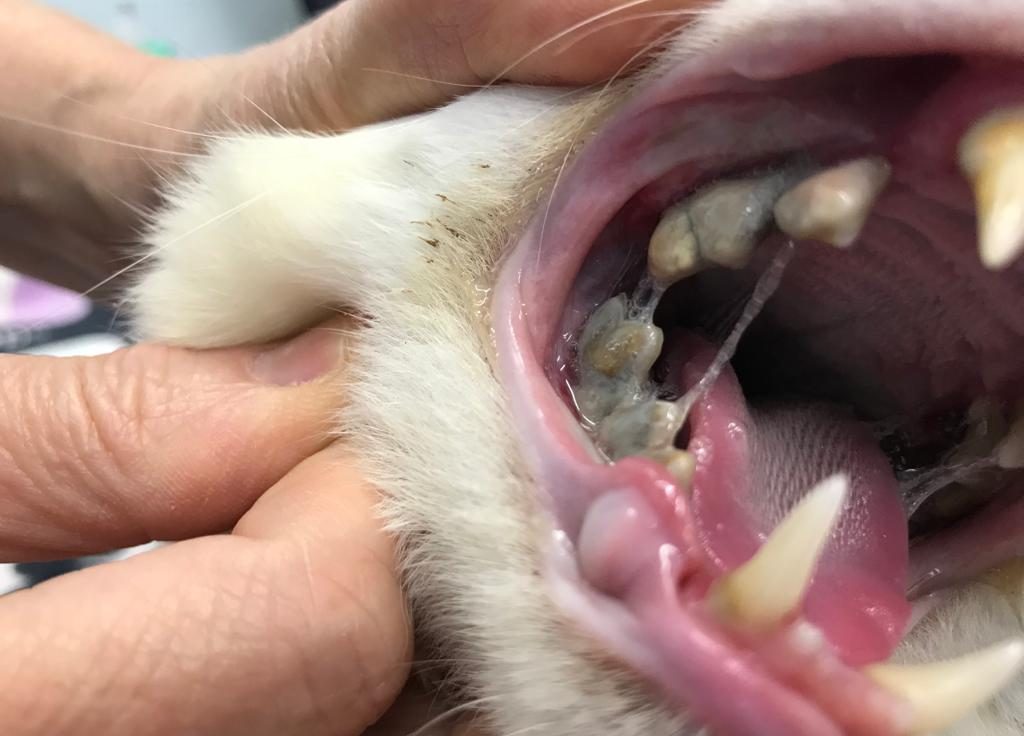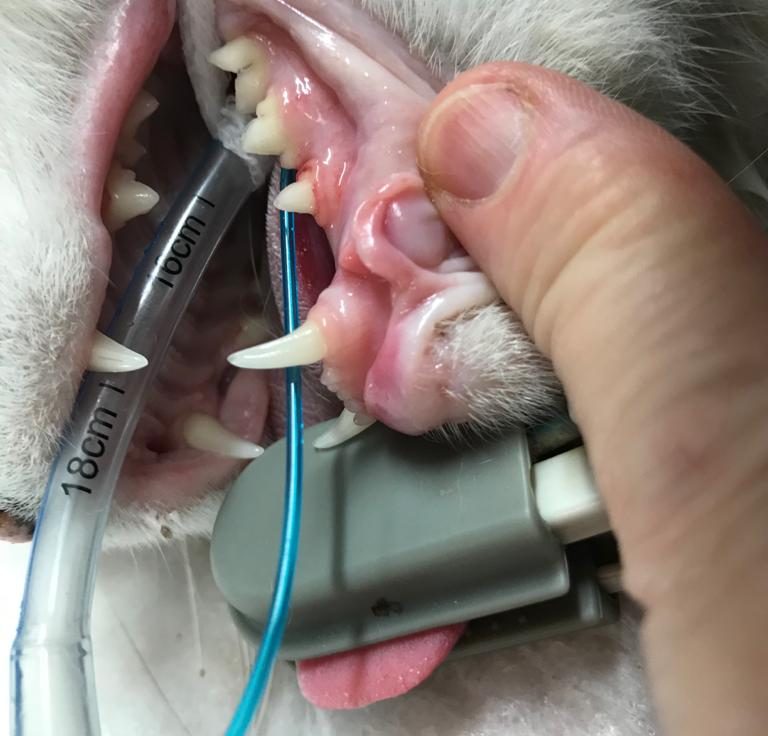

NEWSFLASH! 80% of dogs (and 70% of cats) have dental disease by the age of 3 years old!
We know that it’s essential to keep our pets’ teeth and gums in good health, as we do our own, but why is this so imperative?
FULL-BODY HEALTH
Tooth and gum disease can affect our pet’s entire body. If Fluffy’s teeth are loose and sore, it becomes difficult for him to enjoy his food, and he’ll quickly lose condition. Added to this, bacteria present in infected gums are circulated throughout the body via the bloodstream. A diseased mouth, apart from smelling awful, can result in septicaemia, which can affect the heart, kidneys and other organs.
“CADAVER BREATH”
Remember the adorable puppy- or kitty-breath that melted our hearts when we first brought our furball home? These days those kisses are not quite as pleasant…. Your pet’s diet may be a factor, e.g. if he eats a high-fish diet or one that gives him indigestion and causes burping. Or the pong may be a result of an underlying health problem – be sure to bring him in for a veterinary check-up to rule out medical causes.
EXPENSE
Dogs and cats won’t “open up and say Ahhhh” for their vet, as we do when we go to the dentist. A dental scale and polish for pets, therefore, requires a general anaesthetic. Dental scaling, polishing, charting pockets (and as needed dental x-rays) under anaesthetic are part of routine care. In more severe cases, an hour or two of tooth extractions could be required, and you are potentially looking at a bill of up to $2000!
And who doesn’t want to avoid having their pet put under anaesthetic for longer than necessary for extractions if this can be prevented by homecare and early intervention dental cleans?
Example of the result after a dental scaling and polishing. Healthy teeth and gums!
SIGNS OF DENTAL DISEASE TO LOOK OUT FOR:
- Bad breath
- A change in eating habits, not wanting to chew on toys
- A painful mouth (not wanting the mouth being touched)
- Excessive drooling
- Rubbing the face on the ground or pawing at the face
- …even weight loss
How can we ensure that our pets’ teeth and gums stay in good health from puppy- or kitty-hood, right through to their golden years, so we never have to avoid their happy panting breath or loving licks?
HOME MAINTENANCE:
The gold standard of dental care is for you to brush your pet’s teeth. Please contact the clinic for a homecare sheet on how to get your pet used to this – most dogs are happy to let you do it, with a little patience and training…and yummy-tasting toothpaste. Never use human toothpaste, as this contains fluoride, which cannot be swallowed. Even cats can learn to enjoy having their teeth brushed.
Other top tips for home dental care include:
- Feeding a veterinary-premium diet which includes dental care – ask our team for a rundown on the options.
- Offering dental-care chews daily, eg. Greenies and Dentastix or a raw carrot.
- Using vet-endorsed mouthwashes or water additives to help dissolve plaque – beware of cheap imitations! Just because it’s green, doesn’t mean it works….
A WORD ON BONES
These may help keep teeth clean, but they can also damage tooth enamel and crack teeth. Sharp splinters can wreak havoc all the way down the digestive tract, puncturing tissues and organs, forming obstructions and, if they happen to travel all the way to the end, lodge in the rectum, building up into a painful mass that may need removing via enemas or even surgery. All in all, feeding bones is a potentially costly exercise and one that has ended in tragedy for some pets. Bones are not recommended as part of a dental care plan.
Sticks, stones, Frisbees, hard nylon chew toys and tennis balls can also damage teeth and gums!
AN OUNCE OF PREVENTION…
The very best way to deal with dental health problems is to prevent them in the first place. Start your pet on a good-quality, veterinary-endorsed kibble diet from the moment he arrives home. While you’re house-training and socialising him, make tooth-brushing part of his regular routine and inspect your pet’s mouth regularly for plaque and calculus formation, swollen and reddened gums, broken teeth and anything else that looks abnormal. We’ll check your pet’s oral health at each vet visit. And why not include a quality dental chew as a daily treat? If your pet already has dental disease, book a scale and polish to prevent the worsening of the condition. This will get the problem under control, and you will be able to start afresh with a dedicated dental-health routine.
Here’s to many years of fresh furry kisses!


